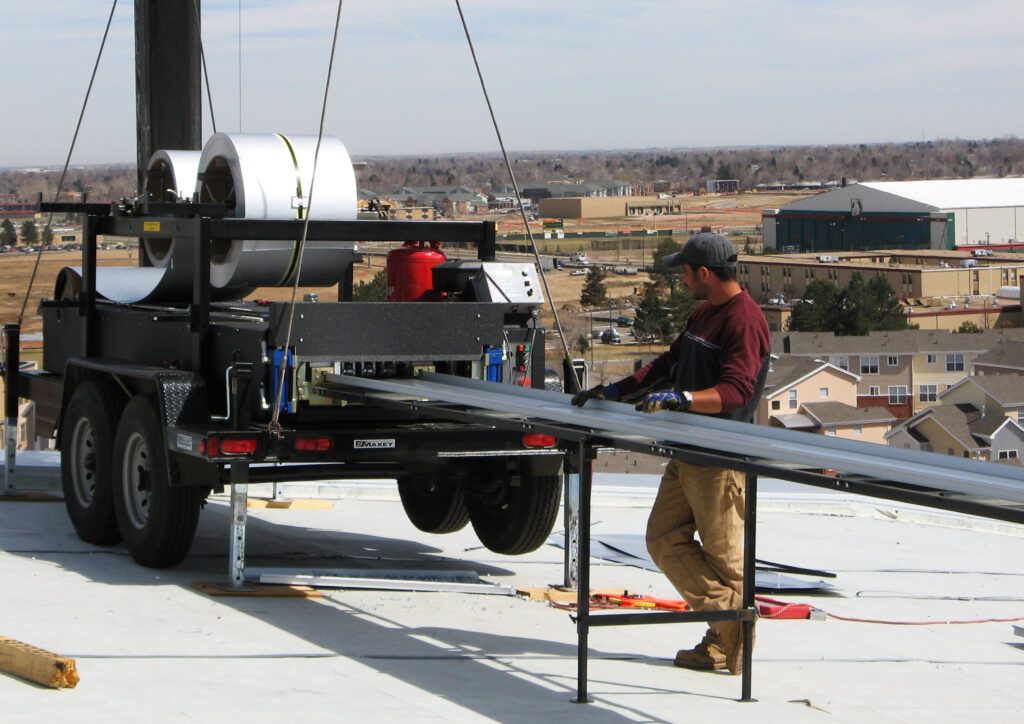When using a portable standing seam roof panel machine, one should always eliminate the possibility of bad coil before starting to make any adjustments to the machine. If the coil is the problem, adjusting the machine takes it out of adjustment and never solves the problem; now you have two problems—the machine is out of adjustment and the coil is bad. Here are some tips to help:

Check for Oil Canning in Coil
Oil canning is defined as the warping or waves noticeable in the flat areas of the coil or panel. First cut off a 6′ long piece of the suspect coil and lay it on a known flat surface like a sheet of plywood, flat workbench etc. so the light reflects off of the coil and you can view it from end to end. If you see waves or ripples anywhere in the coil, it will translate to waves and ripples in the panel. The machine will not take this out, so don’t use the coil to make any panels.
Check for Camber in Coil
Camber is defined as the coil that has a stretched edge and curves slightly from side to side. If the piece looks smooth and lies flat, cut another piece of the same coil approximately the same length and lay it beside the first piece. Slide it over against the first piece so the long edges are touching. Check to see if there are any gaps between them along the full length of the pieces where they meet. If there are gaps, the coil has camber in it and is unusable. If there are no visible gaps, spin one piece end-for-end 180 degrees, slide it back over against the original piece, and check again for gaps. If you do not find gaps this time, the coil is good, has NO camber, and would not be the cause of the problem.
Check Straightness of Panel
Symptom: Finished panel running “uphill” or “downhill” in the male or female leg. Check the straightness of the male and female legs of the panel. If one or both legs have an uphill or downhill slant to them, you need to adjust the tooling to straighten them out. Use the same technique when viewing the panel that you would use to sight a 2 X 4 to see if it is straight.
Check Dimensions of Panel Legs
Next, you should check the dimensions of the male and female legs to make sure they match the profile drawing. If either doesn’t match the drawing, you will need to adjust the machine to get it to match the print.
Check Fit of Male Legs, Female Legs, & Clips
If you’re rollforming a snap-lock profile, check and make sure that the panels snap together correctly and, if the profile uses clips, verify that they properly fit. If it’s a mechanically seamed profile, again, make sure they fit together properly with the clip installed between them.
Check Substrate
If your panel is straight and has no oil-canning or camber when it comes out of your machine but you see oil-canning after installation, you should check the roof deck you are installing it on to make sure it is not concave or convex. Screwing a panel down to this surface can induce stress, which may cause oil-canning. Use a string or fishing line and stretch it from ridge to eave. If the string doesn’t touch the substrate in the middle, the roof is concave. If it touches from ridge to eave, lift one end to make sure it raises off of the substrate with very little movement.
These steps will help to ensure you’re installing a finished panel that has been produced with good coil and a machine in proper adjustment.

